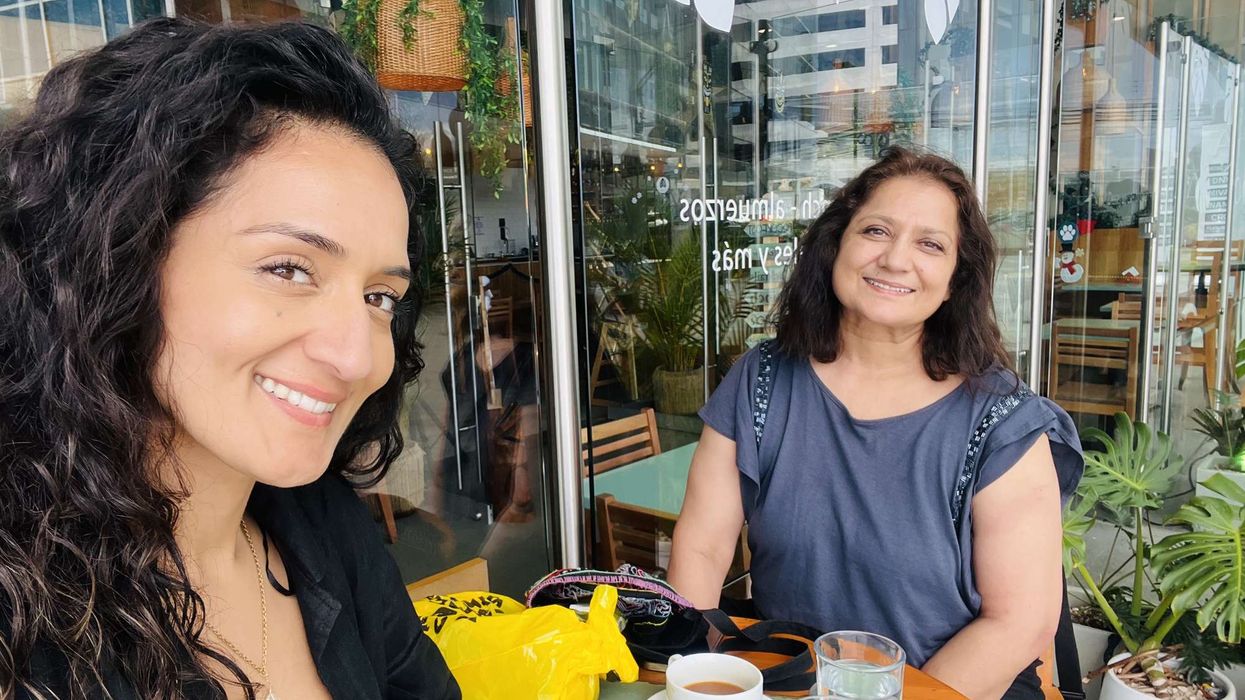MURDER is something that Anuja Dhir has long had to deal with, first during her 23-year career as a barrister, and after that as a judge. Since 2017, she has been pretty much at the top of the tree, sitting at the Old Bailey as Her Honour Judge Anuja Dhir.
Dhir explains the pecking order with judges, who have to be cleared to preside over various categories of crime. “The way it works is that judges are authorised to hear certain cases so Crown Court judges can do all ordinary crime.
The authorisation next stage up is attempted murder and the next stage up from that is murder and the next stage up is terrorism. Most of us (at the Old Bailey) are cleared to do the lot.” She certainly is. At 51, Dhir is now senior and trusted enough to deal with the most sensitive cases of terrorism where the trial may have to be held in camera and some evidence withheld from the public domain for fear of compromising sources of intelligence.
Outside the courtroom, she comes across as a striking woman with an attractive Scottish lilt. Born and brought up in Dundee, she arrived in London only after Dundee University and Dundee Law School.
But once she puts on her judge’s gown and wig, a magical transformation takes place. On this particular afternoon, she is talking to Eastern Eye after she has passed sentence in a horrific case of murder.
“Today, I sentenced an 18-yearold for the murder by stabbing of a 15-year-old. Of course, there is only one penalty for murder and that is life and then we judges set a minimum term – the tariff – and that is the time you must spend inside before you can apply for release on parole.
This was a stab to the left chest – it went through the cartilage of the ribs and hit the heart. I found on the evidence that there was intent to kill. And that increases the sentence. He was 17 at the time of the offence.
He is 18 now. I gave him a minimum term of 19 years – I gave him a minimum sentence longer than he has been alive. It was gang related. It was a big knife. He had a history of possession of knives.” How many murder trials has she done? “Lots – lots and lots. I took them as an advocate as well.
I have done so many but each one has something unique.” What is the maximum tariff she has set? “The maximum I have given is 30.” She says: “Under the normal sentence, you serve half and then you are automatically released on licence. But with a life sentence, the tariff is served in full and then only you can apply for release on parole.”
She goes on: “Passing a life sentence on another human being is a responsibility. Nobody wants to do that. There are times when I have gone home and felt sad that this spur of the moment madness has resulted in two families being devastated. There are no winners in murder trials.
The victim is gone – and gone for ever. And the lives of the victim’s family will never be the same again. And the life of the defendant, often very young, will never be the same again. You can’t help in thinking – you would be inhuman if you didn’t – what if the victim or the defendant had taken a different turn?”
Dhir wears several other hats, as she puts it. “For three weeks of the year, I sit in the Court of Appeal Criminal Division, dealing with appeals, from the Crown Court that go to the High Court (in the Strand), so I sit with the High Court of Appeal judges there. “The other hat that I wear is that I am a judicial appointments commissioner and that means that all the judicial appointments now are made by an independent body called the judicial appointments commission.
They make the appointments of all the judges, including Supreme Court, Court of Appeal, High Court, and all the way down to part time judges. It is to ensure fairness and equality and it has made a difference to the diversity of the judiciary.” She also gives lectures at home and overseas.
In Britain, she takes residential courses for judges on the challenges and complexities when dealing with murder and terrorism. “In fact, I have taught advocacy in countries all over the world and in countries where there is the death penalty – I did some work on death row cases in Jamaica.”
Is she seen as a role model, especially by young Asian women? “I hope so. That is not what I have set out to do. I certainly was (inspired) – I can remember seeing Patricia Scotland (now Commonwealth Secretary General) when I was quite junior. I know it was a very different landscape then. But I remember thinking, “Whoa! Look where she’s got to.” Is she happy with the progress she herself has made? “More than that …I went to a local state school.
I have no lawyers in the family. I didn’t know anybody. In fact, they (Dundee University) gave me an honorary doctorate last year which is lovely.” In court recently, she addressed a barrister formally as “Miss Khan”. Dhir nods: “We qualified together – I have known her all my professional life. We were called (to the Bar) on the same day. Judy Khan is a good barrister, a very good Silk.
We are getting to a point now where we are not on the margins – we are in the mainstream. We are doing the big cases. And it is no longer as it was when we started. There was diversity but it was stuck out there in the middle of nowhere. But it was not doing the really important cases.
But we are now. We are at the heart of it now.” Dhir must be the only Old Bailey judge with posters of the Hindi classic movie, Mughal-eAzam, in her office. She laughs: “This is who I am. My father’s Hindu Punjabi and my mother’s Gujarati, and this is what I grew up with. Daddy came from Punjab in the 1950s and my mother is from South Africa. They met in Britain in Sheffield. One of the real pleasures for me is that I have been accepted, and I have also retained what’s important to me so I haven’t had to pretend nor have I pretended that I am someone I am not.






